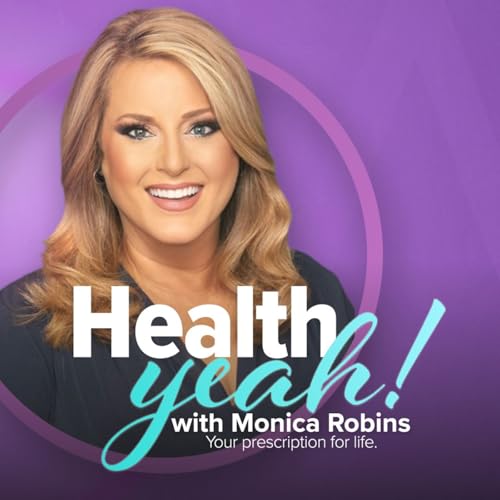
How the NFL's Medical Teams prepare for games overseas
No se pudo agregar al carrito
Add to Cart failed.
Error al Agregar a Lista de Deseos.
Error al eliminar de la lista de deseos.
Error al añadir a tu biblioteca
Error al seguir el podcast
Error al dejar de seguir el podcast
-
Narrado por:
-
De:
Dr. James Voos, president of the NFL Physicians Society and head team physician for the Cleveland Browns, says the planning for international games begins more than six months in advance. Medical staff must obtain temporary licenses to practice medicine in other countries, establish relationships with local hospitals and healthcare providers, and coordinate supplies and equipment that may be needed during practice or game day.
"It's the exact same consideration of the players knowing that when they walk out on the field, they have the same level of care no matter where they're at," Dr. Voos explained in an interview for the Health Yeah! With Monica Robins podcast. "It just adds another layer to it when we go to another country with different laws and temporary medical licensure."
The NFL has expanded its international presence in recent years, with games now played in London, Dublin, and Brazil. As the league continues to add new locations, the process of replicating the comprehensive medical protocols used in home stadiums has become increasingly refined.
All of the same sideline personnel travel with the teams, including unaffiliated neurotrauma consultants who monitor for potential concussions, airway management physicians, and athletic trainers who serve as additional eyes watching the game from above. The medical equipment and blue sideline medical tent that fans see at every NFL stadium are set up identically at international venues.
Dr. Voos, who also serves as the Jack and Mary Herrick Distinguished Chair of Orthopedics and Sports Medicine at the UH Drusinsky Sports Medicine Institute, says the collaboration with international medical professionals has created valuable exchanges of best practices. Many European and Brazilian healthcare providers have attended NFL games and the NFL Combine to observe protocols firsthand.
"We've been able to translate and match those protocols from each of the different sports together," he said, noting that many international partners work with high-level soccer and rugby programs. "It's one of those exchanges of ideas where you see they're doing this in soccer, or they're doing this in rugby, and how can we integrate all of these together."
One notable difference Dr. Voos observed is that many European stadiums have more comprehensive emergency facilities built directly into the venue—essentially small emergency departments where more thorough evaluations can be performed before a player needs to be transported to a hospital.
The emergency action plans used internationally are designed to mirror those used in the United States. If a player requires hospitalization, protocols are in place to ensure a member of the team's medical staff remains with the athlete to provide continuity of care and help ease anxiety about being in an unfamiliar medical system far from home.
Beyond the immediate medical considerations, teams also address player health in the weeks leading up to international travel. Dr. Voos says education about managing jet lag begins several weeks before departure, with recommendations about sleep schedules, diet, and rest during the flight. Teams typically travel several days before game day to allow time for adjustment.
"That process started several weeks ago of educating the players and really providing those tips and recommendations," he explained. "That way, we're not trying to figure it out when we get there."
The goal, Dr. Voos emphasizes, is for the medical operations to be as invisible as possible so that players and fans can focus on the game itself. While fans at international venues may notice a few additional healthcare providers on the sidelines—the local medical partners working alongside the NFL teams—the evaluation and care processes remain unchanged.
The NFL Physicians Society has made standardizing safety protocols across all venues a priority, working to ensure that the level of care is consistent regardless of location. As the league continues to expand its global footprint, these established relationships and processes will continue to evolve.
"It really shows what a great job the NFL has done working with healthcare systems across the country," Dr. Voos said. "As the head team physician for the Browns and the president of the NFL Physicians Society, it's something we've taken great pride in—really being the leaders in medicine and the leaders in safety."
Monica Robins is not a medical doctor. All content presented in this program is for informational purposes only. It is not intended to be a substitute for professional medical advice and should not be relied on as health or personal advice. Always seek the guidance of your personal doctor or qualified healthcare professional with any questions regarding your health or medical condition.


